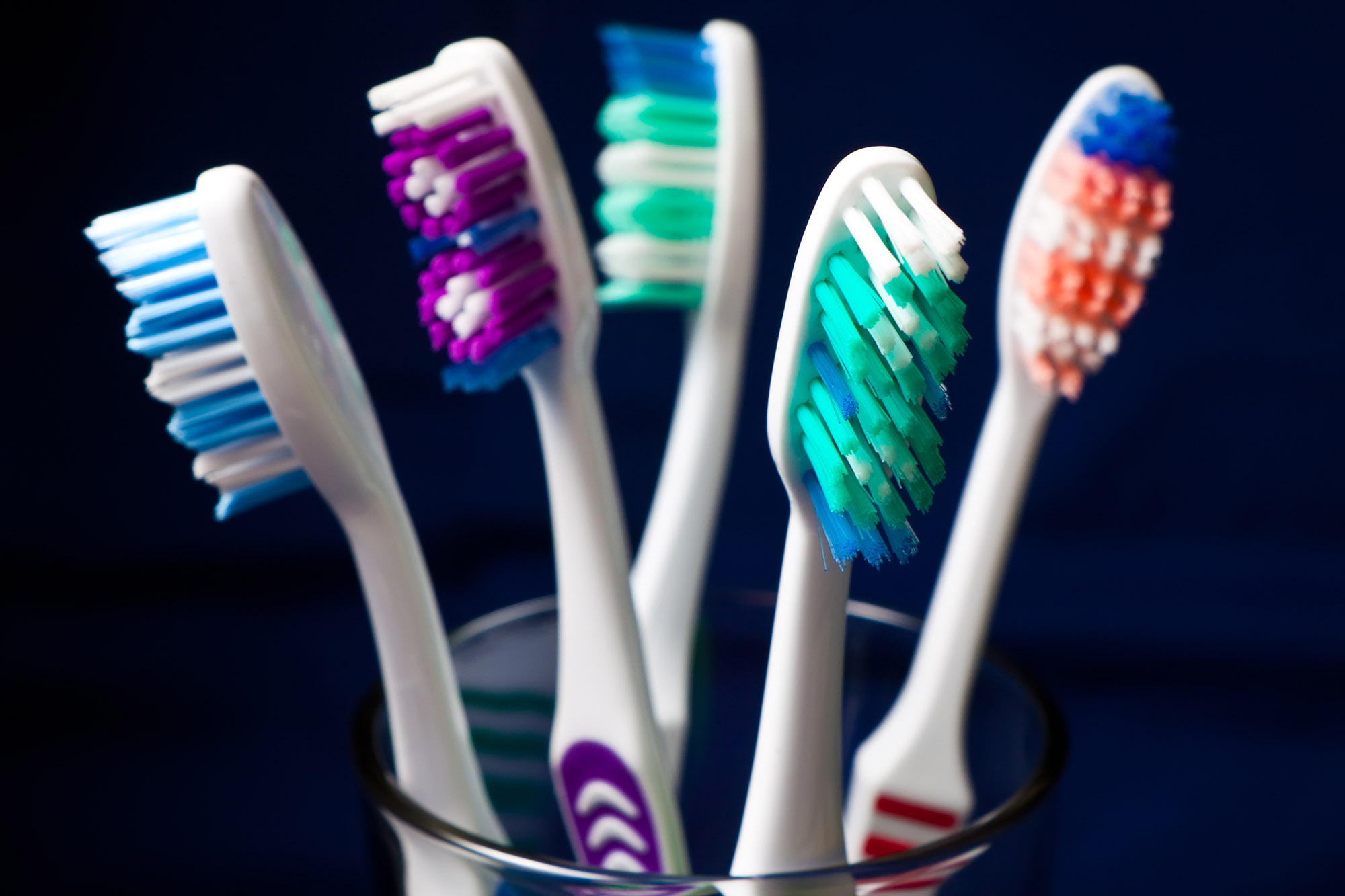
Your toothbrush looks innocent enough sitting on your bathroom sink. But before you put it in your mouth, consider this: the average toothbrush can contain 10 million bacteria or more—including E. coli and Staph, according to a study at the University of Manchester in England. Yuck.
What’s inside your mouth?
At any given time, there are 100-200 species of oral bacteria living in your mouth. “In an unbrushed mouth, there can be as many germs as a dirty bathroom floor,” says Ann Wei, DDS, a prosthodontist based in San Francisco. In addition, your toothbrush is a little bacteria magnet, attracting the little buggers from several sources: If you store your toothbrush on or next to the bathroom sink, it gets contaminated from splashing from washing hands — and whatever you are washing off your hands is getting splashed back as well.
The toilet and your toothbrush
If you really want to gag, think about what happens when you flush with the toilet lid open. Charles Gerba, Ph.D., Professor, Microbiology & Environmental Sciences, University of Arizona College of Public Health, points out that bacteria and viruses falling from toilet spray “remain airborne long enough to settle on surfaces throughout the bathroom.” An English study found that diarrhea-causing bacteria from a lidless flush flew as high as 10 inches above the toilet.
And if you drop your brush on the floor, does the five-second rule apply? Nope. It is coming into contact with toilet spray particulate that has settled there plus anything else that has been tracked in on people’s feet.
Don’t use plastic containers
Do you store your toothbrush in an airtight container? Don’t. The toothbrush can’t dry out between brushing, which encourages mold growth. Also, if you store all the family toothbrushes together in one container, the bacteria can spread from one to the other if the heads are touching. That’s an especially bad idea if one person is sick.
Along the same lines, it’s possible for germs to be transmitted from one brush to another by sharing toothpaste.
How to keep it clean Now that you are sufficiently revolted, are you ready to start treating your brush a little better? Here’s what to do to keep your toothbrush as bacteria-free as possible.
Get a new brush. Replace your brush every three to four months, or when the bristles get splayed and frayed, says Judith A. Jones, DDS, MPH, DScD, Professor and Chair, Department of General Dentistry Director, Boston University School of Dental Medicine. Replacement gets rid of germs and makes sure you are using effective brushes.
Use the right toothpaste. While most toothpastes do kill germs, some are better than others. Toothpastes with triclosan/copolymer are better than regular fluoride toothpastes at killing oral bacteria.
Don’t share. Don’t share brushes. Not matter how conscientious you are about cleaning, you will never remove all bacteria. If you want to be really safe, it’s better to have different tubes of toothpaste for family members. “If you are a family that shares, when you squeeze the toothpaste onto brushes, do not press the paste opening to the brushes. Instead, it’s better to lay the toothpaste over the brush without physically contacting the toothpaste opening,” says Dr. Wei.
Clean your bristles. Occasionally soak yours in hydrogen peroxide or mouthwashes with antibacterial agents, especially if you’ve dropped it on the floor, advises Dr. Wei. And you should clean after every brush by rinsing your toothbrush in tap water or even washing with antibacterial soap. Make sure to rinse well so you don’t get residual soapy taste. “I occasionally put mine through the dishwasher,” says Dr. Jones, a spokesperson for the American Dental Association. If you are going to put your electric toothbrush through the dishwasher, make sure you only put in the bristle end, not that electric charger.
Close the lid. Always flush your toilet with the lid down! Enough said.
Expose it to air. Don’t store in an airtight container. If you keep yours in the medicine cabinet – generally, a good idea – you can tell if enough air is getting in if your brush dries out between cleanings. And If you store toothbrushes together, make sure the heads don’t touch.
Source: Grand parents








